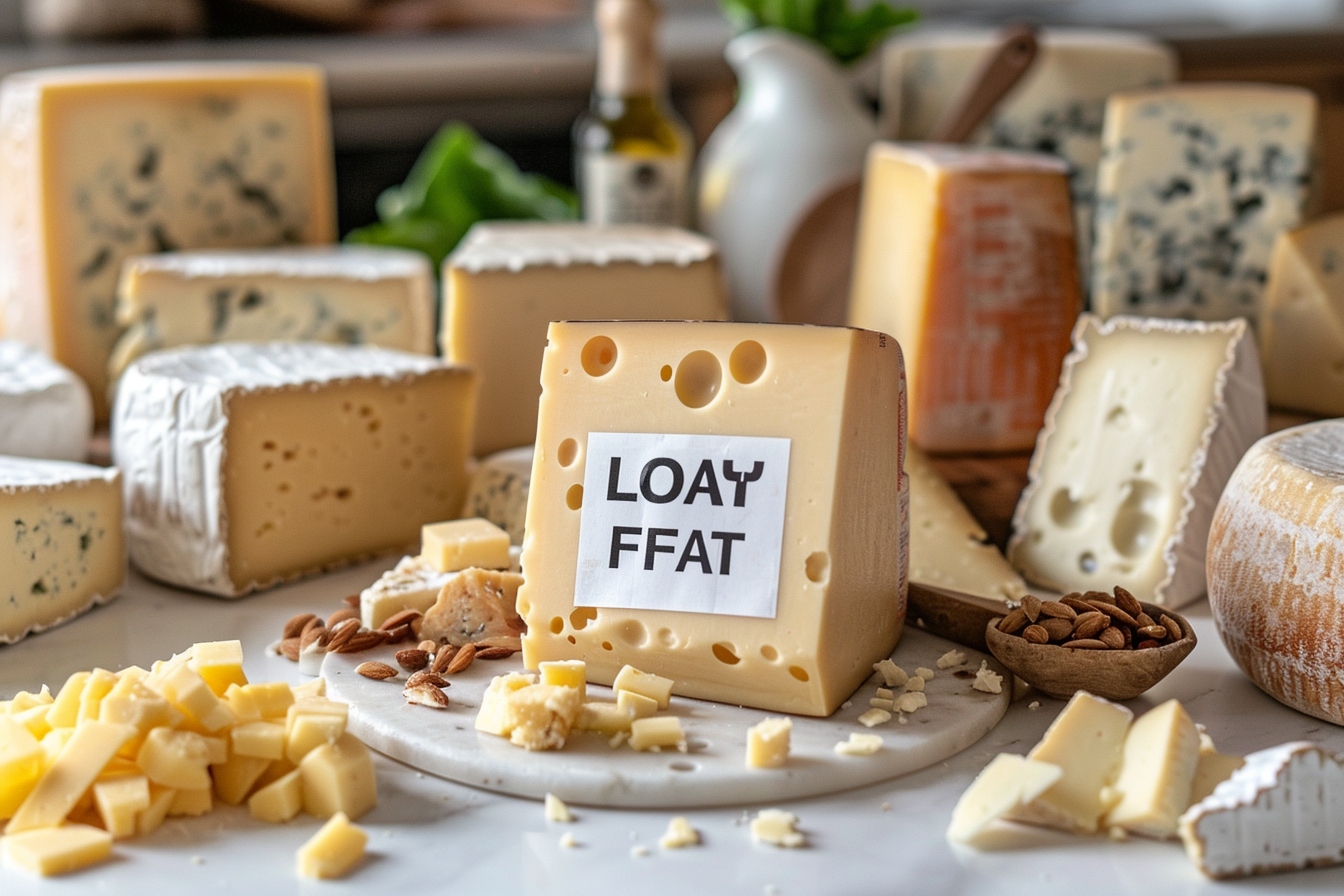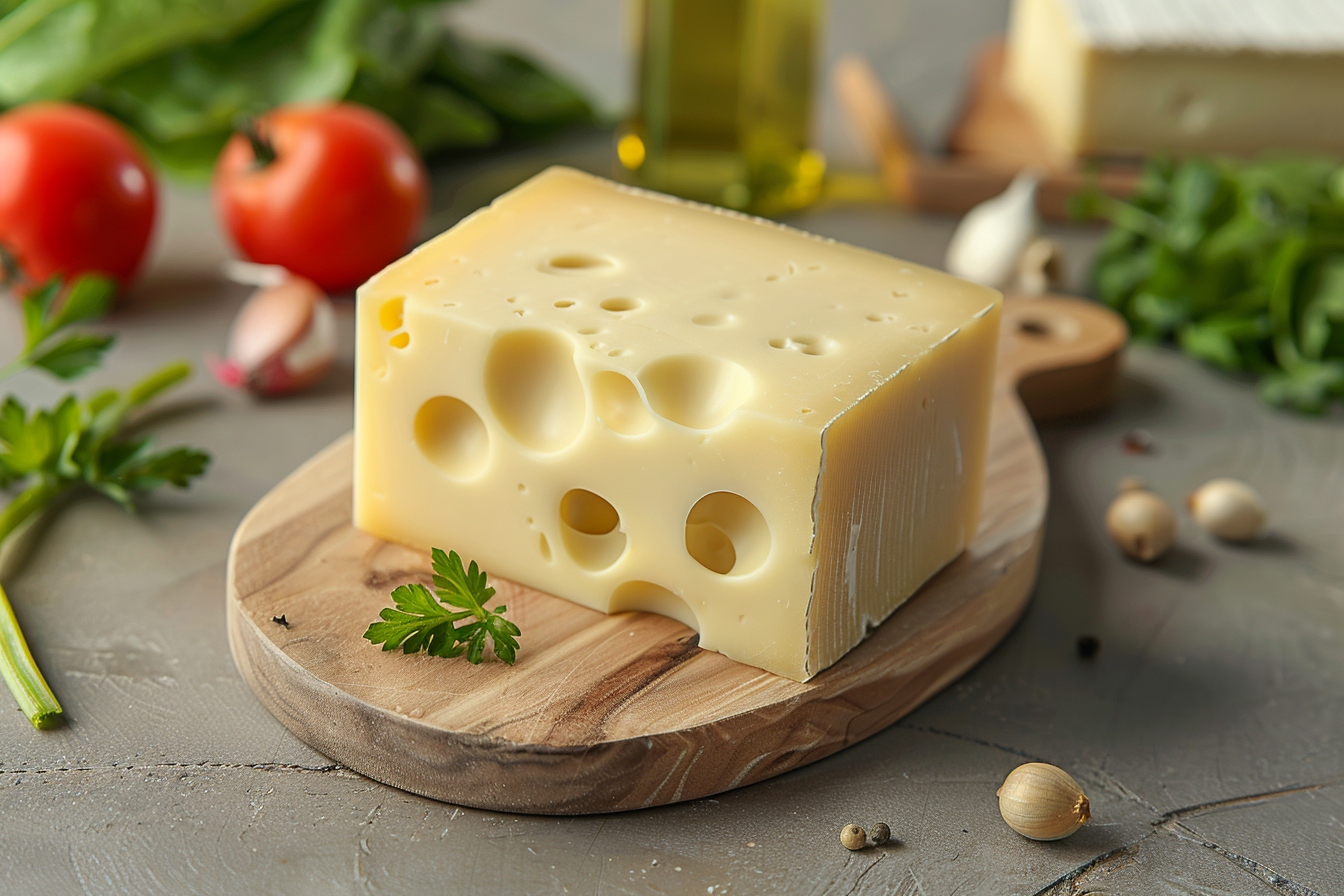Cheeses excite the taste buds of many people. However, when it comes to living a healthy lifestyle, many wonder about their fat content. The good news is that there are lower-calorie cheeses that can fit perfectly into a balanced diet.
What determines the fat content of a cheese?
 The intensity of the taste of a cheese can often be linked to its fat content. However, this is not always the case. The fat content of a cheese is generally expressed as a percentage of fat in the finished product, or as a percentage of fat on dry matter, which corresponds to the amount of fat in relation to the dry part after the removal of the water.
The intensity of the taste of a cheese can often be linked to its fat content. However, this is not always the case. The fat content of a cheese is generally expressed as a percentage of fat in the finished product, or as a percentage of fat on dry matter, which corresponds to the amount of fat in relation to the dry part after the removal of the water.
The manufacturing method also plays a crucial role. For example, fresh cheese generally contains less fat than aged cheese because it retains more water. The pressing and draining technique also influences the fat content of the cheese.
The least fatty varieties of cheese
Cottage cheese: a champion in all categories
Combining softness and lightness, white cheese is a must-have for those looking to reduce their fat intake. With only 0.2% to 4% fat, it is a great choice for healthy recipes and can easily replace higher-cream cheeses.
Ricotta: the Italian alternative
There ricotta, this soft and creamy Italian cheese, contains less fat than most of its counterparts. It is often used in Italian cuisine, both in savory preparations such as lasagna and in desserts.
Fresh cheeses: safe values
THE cottage cheese and the fromage frais are light alternatives to creamy creams and cheeses. With a fat content that varies between 4% and slightly lower, they allow you to prepare light dishes without sacrificing texture.
Tofus: the plant-based choice
Although the tofu is not a cheese in the traditional sense, this soy-based preparation appeals with its low fat content. It comes in several consistencies and can be used in a wide variety of recipes, often borrowing traits from the cheese it replaces.
How to choose a low-fat cheese?

Favor fat content on the packaging is a good start, but you also need to look at the general composition. Low-fat cheeses are sometimes synonymous with the addition of starches, salt or other additives to compensate for the reduction in fat.
Opt for cheeses with the mention “light” Or “lightened” is wise, however this does not guarantee that the product is low in calories. The key is to decipher the labels to understand what exactly we are consuming.
The benefits of low-fat cheese
Contribute to better cardiovascular health
By limiting saturated fatty acids in your diet, lower-fat cheeses help reduce the risk of cardiovascular disease.
Help with weight management
As part of a controlled diet, consuming low-fat cheeses can contribute to more effective weight management without having to completely abandon this type of dairy product.
Allow a varied diet
Who says less fat does not mean less taste. Low-fat cheeses offer a range of flavors that allow you to vary pleasures and recipes without guilt.
Pitfalls to avoid with low-fat cheeses
The promise of low-fat cheese can hide artifice. Because the texture and taste are sometimes altered, some manufacturers add ingredients to compensate. Sugar, salt and additives can turn a healthy choice into a less desirable option.
It is crucial to remain vigilant and read the labels carefully. Naturally low-fat cheeses are often a better option compared to processed products.
Use low-fat cheeses in your recipes
Cooking is an art of adaptation; So, incorporating less fatty cheeses into your favorite recipes becomes child’s play with a few tips:
- Replace fattier cheeses like Brie or Camembert with leaner cheeses.
- Make room for creativity by using aromatics or herbs to enhance the taste of low-fat cheeses.
- Dare to try unusual combinations: a little low-fat cheese in a protein smoothie or mixed with fruit for a light dessert, for example.
In short, a balanced diet can perfectly include tasty cheeses that are less rich in fat. With a varied offering, healthy choices are within reach. The pleasure of tasting cheese is not incompatible with well-being; it’s about balance and product knowledge.
Thus, enjoying cheese while preserving your health is not only possible, but also an invitation to explore the vast world of low-fat cheeses. Explore, taste and create, keeping in mind that low-fat options can be just as delectable and satisfying as their higher-calorie counterparts.












